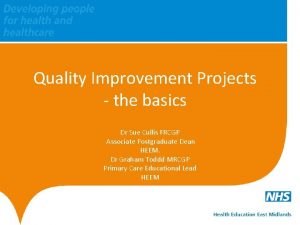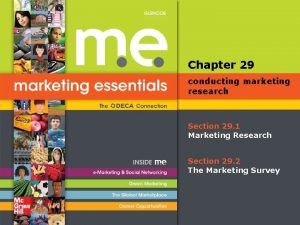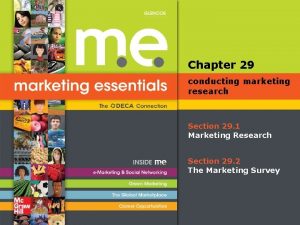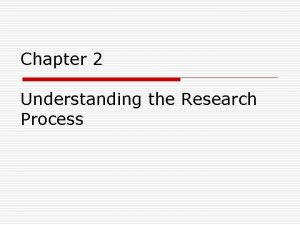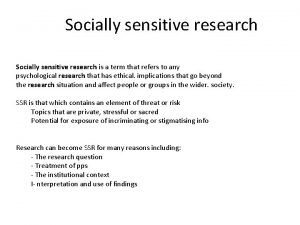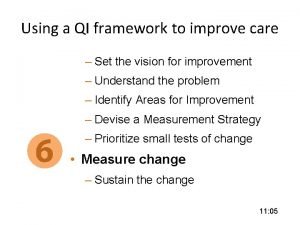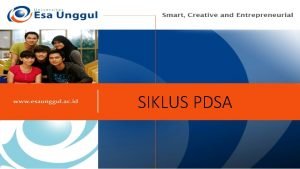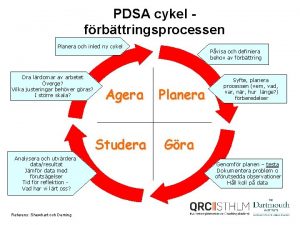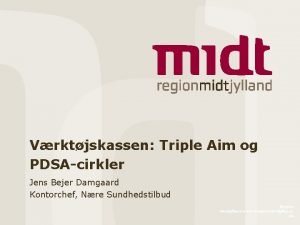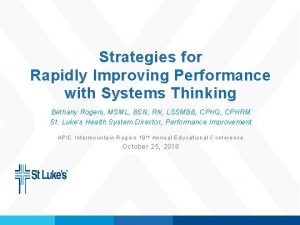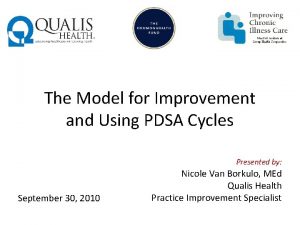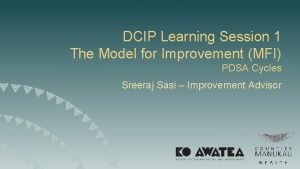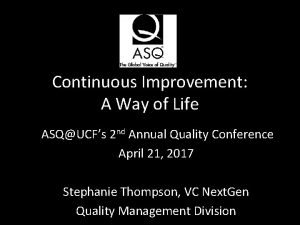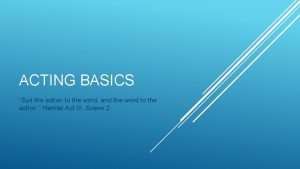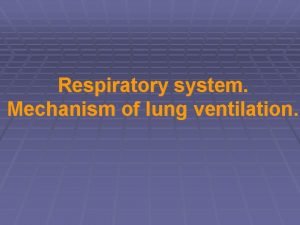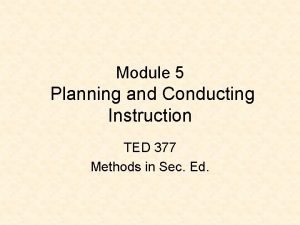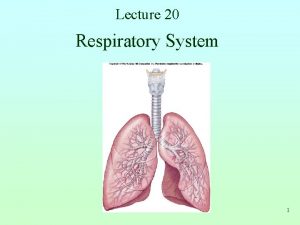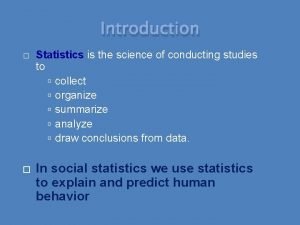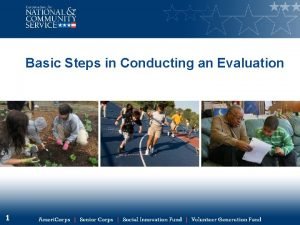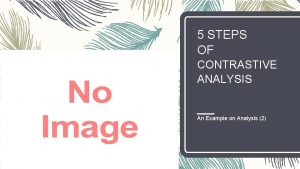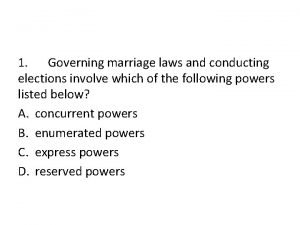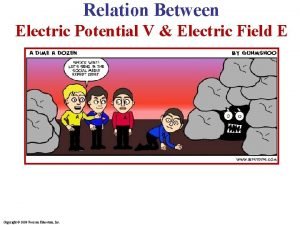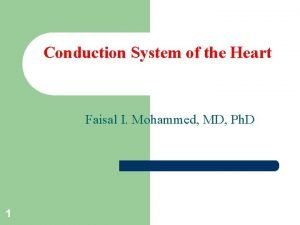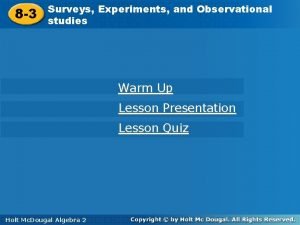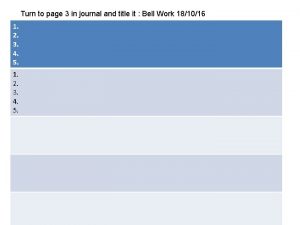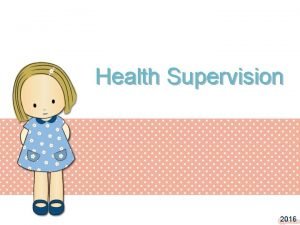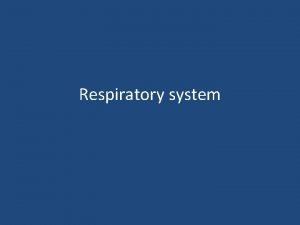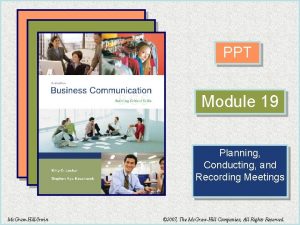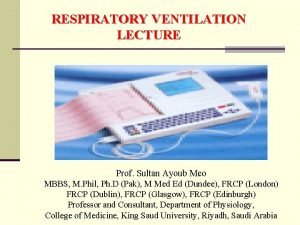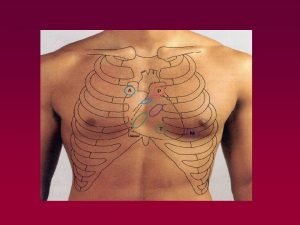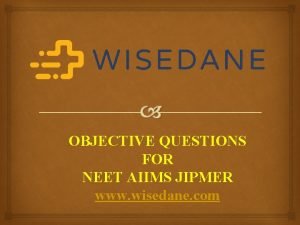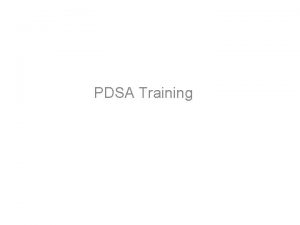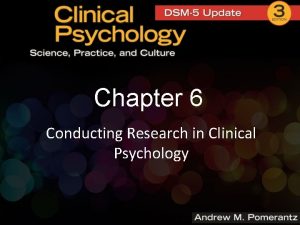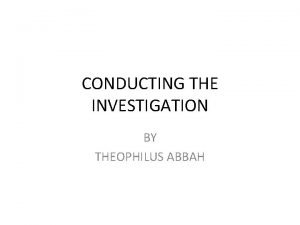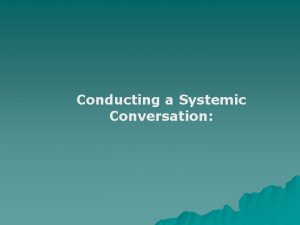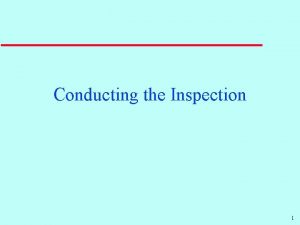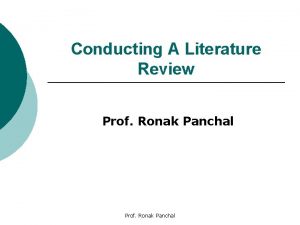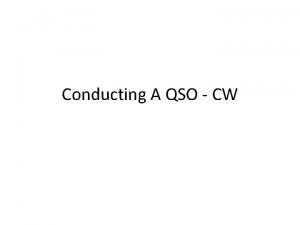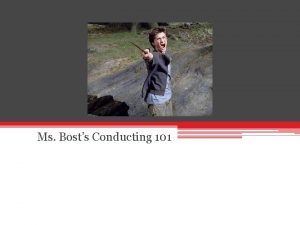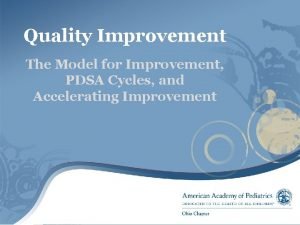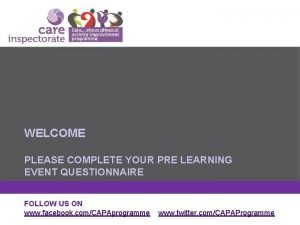PDSA Model in Conducting Action Research PDSA MODEL
































































- Slides: 64

PDSA Model in Conducting Action Research

PDSA MODEL OF ACTION RESEARCH EFA / MDG Goals Connect to SIP, AIP, DEDP, etc Connect to QAA/QMS EFA / MDG Goals Collect data using appropriate instruments (2) (1) PLAN DO Problem Research Questions Framework Research Design Connect to QAA/QMS Connect to SIP, AIP, DEDP, etc (3) (4) ACT STUDY analyze conclude recommend

STUDY ACT DO STUDY DO ACT PLAN

PDSA Steps/Stages of Action Research (2500 words, 10 -15 pages, double spaced) Preliminaries Proponent/s _________ Level: Title _______________________________ Abstract ( ) Classroom ( ) School ( ) District/Division ( ) Region PLAN (Select a Focus, an Area, or a Problem) I. THE PROBLEM (a) know what you want to investigate Rationale: include 1 -3 prior researches/studies or professional literature (b) develop some questions about the area you’ve chosen Problem: include the research questions and/or hypotheses Framework: Relating the Independent Variable and Dependent Variables -may consider INDICATORS cited in the QUALITY MANAGEMENT SYSTEM as variables)

II. RESEARCH METHODOLOGY (c) establish a plan to answer the question – Research design / Research Methodology Research Method Research environment Respondents Data gathering instruments and procedure (not strict, may use QAA/QMS forms) Data analysis procedure (not strict)

DO (Collect Data) – Use multiple data sources (quantitative and/or qualitative) – Collect data regularly – Seek technical assistance, if needed (or if things slow down) – You may administer tests, conduct surveys and interviews and examine documents. – Collected data must be transformed into a useable form.

STUDY (Analyze and Interpret Data) III. RESULTS AND DISCUSSION Apply manageable statistical procedures – Descriptive statistics only like frequency, percent, averages, spread (for quantitative data) – Content/inductive analysis/deriving themes (for qualitative data) – Inferential statistics is optional (but requires randomization/population study) IV. CONCLUSIONS AND RECOMMENDATIONS Highlight the findings and derive conclusions Extract the recommendations

ACT (Take Action) V. IMPLEMENTATION PLAN OF IMPROVEMENT TARGETS To be presented concisely in writing through paragraph and tabular/matrix forms May show a Gantt Chart – Reflect on the conclusions and recommendations – Connect these to plans (SIP, AIP, DEDP, etc) – – e. g. SIP AND AIP REVIEW / REVISION / PLAN ADJUSTMENT Implement some actions immediately Assess implementation of selected actions Share them to stakeholders Connect everything to QAA, QMS Bibliography Appendices Remember: Action Research is CYCLICAL! Just follow the PDSA cycle.

Plan Do Study Act


PLAN (proposal) Chapters 1 & 2

CLASSROOM / SCHOOL / DIVISION / HEALTH CARE PROBLEMS FOR ACTION RESEARCH

PROBLEM TYPE 1: LEARNERS IN THE CLASSROOM, SCHOOL, DIVISION • • • A. Learners LOW Access/Participation Rate LOW Retention / HIGH Drop-Out Rate LOW Completion Rate LOW Achievement (learning areas) • NAT / NCAE • A&E • PEPT • Grades per quarter LOW Discipline • Absenteeism • Tardiness • Bullying • Poor study habits

PROBLEM TYPE 2: TEACHERS IN THE CLASSROOM, SCHOOL, DIVISION • Teachers LOW Performance Evaluation • • • English Proficiency LOW NCBTS-TSNA POOR EXECUTION of TEACHING RESPONSIBILITIES • • • Practices on Lesson Plans/Learning Logs Practices on Test Questions with Table of Specifications Practices on Making Class Records and Rating Sheets • • Practices on Teaching Approaches, Methods, Techniques, Strategies, • • Assignments and projects Questioning Instructional Materials Student-teacher-IM interaction POOR DISCIPLINE • • • Absenteeism Tardiness etc

PROBLEM TYPE 3: (WITH DIRECT IMPACT ON LEARNERS) NON-TEACHING STAFF IN THE SCHOOL, DIVISION • Non-teaching Staff LOW Performance Evaluation • • LOW NCBTS-TSNA POOR EXECUTION of DUTIES and RESPONSIBILITIES • • • Competence Skills Practices on Reports Submission Practices on Delivery of Services POOR DISCIPLINE • • • Absenteeism Tardiness etc

PROBLEM TYPE 4: (WITH DIRECT IMPACT ON LEARNERS) PARENTS IN THE CLASSROOM, SCHOOL, DIVISION • LOW Involvement and Cooperation • • • School activities Classroom meetings (parents-adviser conference) Attendance in the Due process on grave student offenses

The Identified Problems in the Classroom, School, Division are called potential DEPENDENT VARIABLES. the Identified settings like the Classroom, School, Division and the respondents like pupils/students/teachers/parents /non-teaching staff are called potential INDEPENDENT VARIABLES.

Action Research Framework/Paradigm This is a 3 -box device that shows only the variables (independent, dependent) that an action researcher likes to study Box 1: independent variables Box 2: dependent variables Box 3: plan of action after making a conclusion and recommendation

Typical Framework for Non-experimental Research Dependent Variable/s Independent Variable/s Action

Typical Framework for Non-experimental Research Dependent Variable/s Independent Variable/s Settings: Classroom, School, Division Respondents: Pupils/students Teachers Parents non-teaching staff Identified Problems in the Classroom, School, Division Hint: remove the word High, low, poor Action

Independent Variables as Profile Variables Respondents – Pupils/students Gender/sex Birthday/Age Grade level Hobbies/favorites Health history Family background – Socio economic status – Occupation of mother/father – Family size others

Independent Variables as Profile Variables PERSONAL PROFILE Gender/sex Birthday/Age Civil Status If married, # of kids, occupation of wife/husband Hobbies/favorites Health history Others PROFESSIONAL PROFILE Educational Attainment Major # of yrs in the service (teaching, non-teaching) Trainings attended

Independent Variables as Profile Variables PERSONAL PROFILE Gender/sex Birthday/Age Civil Status If married, # of kids, occupation of wife/husband Hobbies/favorites Health history Others PROFESSIONAL PROFILE Educational Attainment Major # of yrs in the service (teaching, non-teaching) Trainings attended etc

Independent Variables as Profile Variables PERSONAL PROFILE Gender/sex Birthday/Age Civil Status If married, # of kids, occupation of wife/husband Hobbies/favorites Health history Others PROFESSIONAL PROFILE Educational Attainment # of yrs in the service, if employed Trainings attended on child rearing etc

Fill-in the Action Research framework by CHOOSING the PROBLEM (1 or more), SETTING (1 only) and RESPONDENTS (1 or more)


Typical Framework for Non-experimental Research Dependent Variable/s Independent Variable/s Settings: Classroom, School, Division Respondents: Pupils/students Teachers Parents non-teaching staff Identified Problems in the Classroom, School, Division Hint: remove the word High, low, poor Action

Typical Framework for Non-experimental Research Dependent Variable/s Independent Variable/s Setting: Classroom Respondents: Pupils/students Gender/sex Birthday/Age Grade level Hobbies/favorites Health history Family background Socio economic status Occupation of mother/father Family size Action Student Performance Math VII • 1 st Grading • 2 nd Grading • 3 rd Grading • 4 th grading • NAT Improve Teaching Strategies That Are more Learner. Centered Per grading period

Action Research Questions Must be derived from the Action Research Framework

Typical Framework for Non-experimental Research Dependent Variable/s Independent Variable/s • Question 2 Question 1 Question 3 Question 4

Typical Framework for Non-experimental Research Independent Variable/s Dependent Variable/s • What is/are the average performance of the respondents? (complete with details) Question 1 What is the profile of the respondents in the given setting Question 2 Question 4 Question 3 What is the relationship/ Comparison? What plan of action will I do?

Typical Framework for Non-experimental Research Dependent Variable/s Independent Variable/s Setting: Classroom Respondents: Pupils/students Gender/sex Birthday/Age Grade level Hobbies/favorites Health history Family background Socio economic status Occupation of mother/father Family size Action Student Performance Math VII • 1 st Grading • 2 nd Grading • 3 rd Grading • 4 th grading • NAT Improve Teaching Strategies That Are more Learner. Centered Per grading period

Question 1 What is the profile of the students in the classroom according to their Gender/sex Birthday/Age Grade level Hobbies/favorites Health history Family background – Socio economic status – Occupation of mother/father – Family size

Question 2 What is the mean performance of the students in the classroom in terms of their Math VII grades in the – – – First grading Second grading Third grading Fourth grading NAT VI

Question 3 Is there a significant relationship between the students’ Gender/sex; Birthday/Age; Grade level; Hobbies/favorites; Health history; and Family background – Socio economic status – Occupation of mother/father – Family size and their performance in Math VII during the – First grading; – Second grading; – Third grading; – Fourth grading; and – NAT VI?

Question 4 What plan of action should be done to further increase the Math VII grades in terms of teaching strategies per grading period?

Writing the Action Research Title based on Question 3 Relationship between the Students’ Profile and their Math VII Performance in the Four grading Periods and the National Achievement Test Or, a BETTER title is Students’ Profile and their Math VII Performance in the Four grading Periods and the National Achievement Test: Towards the Improvement of Teaching Strategies


Typical Framework for Non-experimental Research Dependent Variable/s Independent Variable/s Settings: Classroom, School, Division Respondents: Pupils/students Teachers Parents non-teaching staff Identified Problems in the Classroom, School, Division Hint: remove the word High, low, poor Action

Typical Framework for Non-experimental Research Dependent Variable/s Independent Variable/s Setting: School Respondents: Pupils/students Family SES Family size Distance of school from Home Nutritional status Action • Learner Attendance • Learning Area Performance of Learners in the 1 st Grading Period of SY 2015 -2016 Improve Learner Services For Advanced, Least, Lost, Last

Question 1 What is the profile of the students according to their – – – Grade level Family SES Family size Distance of school from Home Nutritional status

Question 2 What is the performance of the learners in the following for 1 st grading period • Learner Attendance • Learning Area Performance • • Science Math English Filipino AP MAPEH TLE Es. P

Question 3 What is the relationship of the following learner profiles – – – Grade level Family SES Family size Distance of school from Home Nutritional status with the following learner performance in the 1 st grading period • Learner Attendance • Learning Area Performance • • Science English AP TLE Math Filipino MAPEH Es. P

Question 4 What plan of action should be done to improve learner services for advanced, least, lost, last to further increase learner attendance and performance for the remaining grading periods?

Writing the Action Research Title based on Question 3 Relationship between the Learners’ Profile and their Attendance and Learning Area Performance during the First Grading Period Or, a BETTER title is Learners’ Profile and their School Attendance and Learning Area Performance For the 1 st Grading Period : Towards the Improvement of School Services


Typical Framework for Non-experimental Research Dependent Variable/s Independent Variable/s • Settings: Division Respondents: School Heads • Gender • Age • Years as School Head • School head position RPMS-based Performance Evaluation • PASSA • Self-Reported Practices on Performance Evaluation Action improve authentic performance and practices On performance evaluation

Question 1 What is the profile of the school heads according to their – – Gender Age Years as school head School head position

Question 2 What is the performance of the school heads in the following • RPMS • PASSA What are the self-reported practices of school heads on performance evaluation?

Question 3 What is the relationship of the following school heads profiles – – Gender Age Years as school head School head position with the following school heads performance • RPMS • PASSA and their self-reported practices

Question 4 What plan of action should be done to improve authentic performance and practices on performance evaluation

Writing the Action Research Title based on Question 3 Relationship between the School Heads’ Profile and their RPMS and PASSA Performance and Performance Practices

Typical Framework for Non-experimental Research Dependent Variable/s Independent Variable/s Settings: Division Respondents: School Heads Accdg to School Type • Elem • Secondary School Size • Small • Medium • Large Teachers Specialization TEACHING LOADS • Learning Area Loads • STA Loads ACHIEVEMENT • NAT Action Propose a Guide on Loading Scheme (Learning Area / STA) That Addresses A R C A

THE EXPERIMENTAL RESEARCH FRAMEWORK

Typical Framework for Experimental Research Independent Variable/s Treatment/s Strategy 1 (control/traditional) Strategy 2 Strategy 3 etc Dependent Variable/s QMS Indicators (choose) A. Learners • Access/Participation Rate • Retention / Drop-Out • Completion • Achievement (learning areas) • NAT / NCAE • A&E • PEPT • Grades per quarter • Discipline B. Parents C. Teachers • CIA Performance D. School • SBM Performance E. Division • Effectiveness and • Efficiency

Scenario A classroom teacher noticed that there is more classroom interaction when students are grouped by dyads or triads. She/He thought of designing a teaching experiment to further his/her claim that students in dyads/triads perform better in English for Grade VI. The teacher has two Grade VI classes.

Typical Framework for Experimental Research Independent Variable/s Dependent Variable/s Treatment/s Strategy 1 (control/traditional for Class 1) Strategy 2 (students in dyads/triads for Class 2) English VI Grades During the Third Grading Period Vocabulary Correct Usage Verbal Analogy Identifying Errors Reading Comprehension

Typical Framework for Experimental Research Independent Variable/s Dependent Variable/s Treatment/s Strategy 1 (control/traditional for Class 1) Strategy 2 (students in dyads/triads for Class 2) English VI Grades During the Third Grading Period Vocabulary Correct Usage Verbal Analogy Identifying Errors Reading Comprehension

Action Research Questions

Typical Framework for Experimental Research Independent Variable/s Dependent Variable/s Treatment/s Strategy 1 (control/traditional for Class 1) Strategy 2 (students in dyads/triads for Class 2) English VI Grades During the Third Grading Period Vocabulary Correct Usage Verbal Analogy Identifying Errors Reading Comprehension in the pre-test and posttest

Question 1 What are the mean grades of the pupils in Grade VI English using the traditional strategy and the experimental (with dyads/triads) strategy during the pre-test and posttest?

Question 2 Is there a significant difference in the (a) pretest, (b) posttest, (c )gain performance in English VI of the students in the traditional strategy and in the experimental strategy (dyads/triads)?

Question 3 What plan of action should be done to further increase the English VI grades of the students?

Reminders in Using Experimental Research There should be 2 or more classes Ideally, only 1 teacher should teach those classes. Develop lesson plans highlighting the distinct difference of the strategies to be used – Cover the same competencies – The same grading period It helps to get their IQ to moderate the initial difference of the classes. Hide professionally the experiment to students and their parents Conduct pre-test and posttest at the same time and venue Teacher’s behavior in class must be the same throughout. Avoid the Hawthorne effect
 Pdsa model nhs
Pdsa model nhs Pdsa model nhs
Pdsa model nhs Pdsa model
Pdsa model Chapter 29 conducting marketing research answers
Chapter 29 conducting marketing research answers Chapter 29 conducting marketing research answers
Chapter 29 conducting marketing research answers Research process
Research process Socially sensitive research meaning
Socially sensitive research meaning Combines natural observation with personal interviews
Combines natural observation with personal interviews Steps of psychological research
Steps of psychological research When conducting research online the keyword
When conducting research online the keyword Marketing research and forecasting demand
Marketing research and forecasting demand Conducting marketing research and forecasting demand
Conducting marketing research and forecasting demand Conducting marketing research and forecasting demand
Conducting marketing research and forecasting demand Pdsa worksheet
Pdsa worksheet Apa itu pdsa
Apa itu pdsa Rampa de pdsa
Rampa de pdsa Pdsa cycles
Pdsa cycles Pdca cykel
Pdca cykel Pdsa cirkler
Pdsa cirkler Pdsa sirkel
Pdsa sirkel Diagrama direcionador
Diagrama direcionador Pdsa cycle in healthcare
Pdsa cycle in healthcare Pdsa sirkel
Pdsa sirkel Pdsa
Pdsa Pdsa falkirk
Pdsa falkirk Pdsa
Pdsa Ucf pdsa
Ucf pdsa Medias.res
Medias.res Rising action of hatchet
Rising action of hatchet The 5 stages of plot
The 5 stages of plot Short story with exposition
Short story with exposition Suit the action to the word the word to the action meaning
Suit the action to the word the word to the action meaning Spirogram diagram
Spirogram diagram Conducting zone and respiratory zone
Conducting zone and respiratory zone Conducting zone lungs
Conducting zone lungs Electric potential inside non conducting sphere
Electric potential inside non conducting sphere Planning and conducting instruction in the classroom
Planning and conducting instruction in the classroom What is the conducting zone of the respiratory system
What is the conducting zone of the respiratory system Statistics is the science of conducting studies to
Statistics is the science of conducting studies to Conducting a fair test
Conducting a fair test Saran wrap has a larger electron affinity
Saran wrap has a larger electron affinity Electric potential
Electric potential Steps in conducting evaluation
Steps in conducting evaluation Contrastive analysis procedures
Contrastive analysis procedures Governing marriage laws and conducting elections
Governing marriage laws and conducting elections Relationship between v and e
Relationship between v and e Heart conducting system
Heart conducting system What are surveys experiments or observations
What are surveys experiments or observations Juan is conducting today's meeting of the spanish club
Juan is conducting today's meeting of the spanish club Health supervision
Health supervision Conducting computerized interviews
Conducting computerized interviews Conducting business ethically and responsibly
Conducting business ethically and responsibly Supervisor coaching
Supervisor coaching Shunt voltage regulator block diagram
Shunt voltage regulator block diagram Internal audit assurance engagement
Internal audit assurance engagement Conducting airways
Conducting airways Perpetual project closure
Perpetual project closure Conducting effective meetings ppt
Conducting effective meetings ppt Steps in conducting field work
Steps in conducting field work Normal minute ventilation
Normal minute ventilation Plant physiology
Plant physiology Fibroserous sac meaning
Fibroserous sac meaning Six identical conducting rods
Six identical conducting rods Conducting slab
Conducting slab Objectives of earthquake drill
Objectives of earthquake drill
